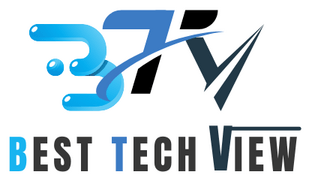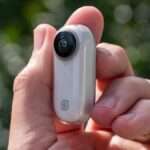Wearable cameras are compact devices worn on the body to capture photos and videos hands-free. They are popular for personal and professional use.
Wearable cameras offer convenience and versatility for capturing moments on the go. These devices have revolutionized how we record events, sports activities, and daily life. Their compact size and hands-free operation make them ideal for various applications, including vlogging, law enforcement, and adventure sports.
Users can easily attach them to clothing or gear, ensuring they never miss a shot. Modern wearable cameras feature high-definition video, image stabilization, and Wi-Fi connectivity, making it simple to share content instantly.
As technology advances, wearable cameras continue to grow in popularity, offering ever-improving performance and ease of use.

Credit: gopro.com
The Evolution Of Wearable Cameras
Wearable cameras have changed how we capture moments. From bulky devices to sleek gadgets, they have come a long way. This evolution highlights their growing importance in our daily lives.
From Novelty To Necessity
Wearable cameras started as a fun gadget. People used them for capturing adventures. They were a novelty for tech enthusiasts. Over time, their use expanded. Today, they are seen as a necessity. They help in various fields like sports, security, and healthcare.
Sports enthusiasts use them to record their activities. Security professionals use them to monitor environments. In healthcare, wearable cameras assist in patient monitoring. This shift shows their increasing importance.
Technological Advances
Technological advances have driven the evolution of wearable cameras. Early models were bulky and had limited features. Modern cameras are compact and offer high-quality video.
Some key advancements include:
- High-Resolution Video
- Longer Battery Life
- Enhanced Storage Capabilities
- Improved Connectivity Options
High-resolution video ensures crystal-clear footage. Longer battery life allows for extended use. Enhanced storage means more footage can be saved. Improved connectivity options facilitate easy sharing.
These advancements make wearable cameras more efficient. They are now an essential tool for many.
How Wearable Cameras Work
Wearable cameras are revolutionizing the way we capture moments. These devices offer convenience and versatility. Understanding how they work helps us appreciate their technology.
The Basics Of Operation
Wearable cameras are small and lightweight. They are designed to be easily attached to clothing or accessories. Most models include a lens, a microphone, and a battery. The lens captures the visual data, while the microphone records audio.
The camera’s processor handles the data from the lens and microphone. It converts the data into a digital format. This digital data is then stored on an SD card or internal memory. Users can later transfer this data to a computer or smartphone.
Many wearable cameras also feature Wi-Fi or Bluetooth. These features allow for real-time streaming or quick data transfer. Some advanced models include GPS for location tracking.
Innovations In Design
Recent innovations have led to smaller and more powerful wearable cameras. 4K resolution is now common, providing stunning video quality. Stabilization technology has also improved, reducing shaky footage.
Battery life has seen significant improvements. Modern wearable cameras can record for several hours on a single charge. Waterproof and shockproof designs make these cameras suitable for extreme sports and outdoor activities.
Some models feature voice control. This allows users to operate the camera hands-free. Artificial intelligence is also being integrated. AI can help with object recognition and automated editing.
| Feature | Description |
|---|---|
| 4K Resolution | Provides high-quality video capture |
| Stabilization | Reduces shaky footage |
| Waterproof | Can be used in wet conditions |
| Voice Control | Allows hands-free operation |
- Battery Life: Record for hours on a single charge.
- GPS: Track your location.
- AI Features: Helps with object recognition.
Wearable cameras are constantly evolving. These innovations make them more user-friendly and versatile.
Types Of Wearable Cameras
Wearable cameras have revolutionized how we capture and share moments. They come in different types, each serving unique needs and scenarios. Let’s explore the various types of wearable cameras available today.
Body Cameras
Body cameras are often used by law enforcement officers. They attach to uniforms and record interactions. These cameras help provide evidence and ensure accountability.
Some features include:
- High-definition video recording
- Long battery life
- Wide-angle lenses
Popular brands include Axon, GoPro, and Vievu. They are built to be durable and weather-resistant.
Lifestyle Cameras
Lifestyle cameras are perfect for capturing everyday moments. These cameras are often lightweight and easy to wear. They can attach to hats, glasses, or even wristbands.
Common uses include:
- Travel vlogging
- Sports activities
- Day-to-day events
Brands like GoPro and DJI offer lifestyle cameras with high-quality video and image stabilization. These cameras are user-friendly and often come with mobile apps for easy sharing.
Specialized Devices
Specialized devices cater to niche markets. These cameras are designed for specific tasks and environments. Examples include thermal cameras for firefighters and night vision cameras for wildlife enthusiasts.
Key features:
- Specialized imaging technology
- Robust build for extreme conditions
- Customizable settings
Specialized devices are often used in professional settings. Brands like FLIR and Seek Thermal are leaders in this category.
Benefits Of Using Wearable Cameras
Wearable cameras are revolutionizing how we capture and share moments. These devices offer a range of benefits that cater to various needs. From personal use to professional applications, the advantages are numerous.
Hands-free Operation
One major benefit is hands-free operation. Wearable cameras allow you to record without holding a device. This means you can focus on the activity at hand. Biking, hiking, or cooking becomes easier to document. Your hands are free to engage fully.
Capturing Authentic Moments
Wearable cameras excel at capturing authentic moments. They record from your point of view. This perspective adds a genuine feel to the footage. No need to stop and pose. Your recordings will be natural and spontaneous.
Applications In Professional Fields
Wearable cameras have many professional applications. They are used in various fields. Below are some examples:
| Field | Application |
|---|---|
| Healthcare | Documenting surgeries and medical procedures |
| Law Enforcement | Recording police interactions and evidence collection |
| Sports | Analyzing performance and training sessions |
| Education | Creating instructional videos and tutorials |
These cameras are also used in journalism. They provide a real-time view of events. Wearable cameras offer valuable insights and documentation.
Considerations Before Purchasing
Wearable cameras can be fun and useful. They capture moments easily. But before buying, think about a few key points. These points help you get the best camera.
Battery Life And Storage
Battery life is very important. You do not want your camera to die quickly. Look for a camera with long battery life. Check how long it lasts when recording. Think about storage too. More storage means you can record more videos.
| Battery Life | Storage |
|---|---|
| 2-4 hours | 32GB |
| 4-6 hours | 64GB |
| 6-8 hours | 128GB |
Image Quality
Image quality matters. You want clear and sharp videos. Check the resolution. Higher resolution means better quality. 1080p is good. 4K is even better. Also, check the frame rate. More frames per second means smoother videos.
- 1080p resolution
- 4K resolution
- 30 frames per second
- 60 frames per second
Privacy Concerns
Think about privacy. Cameras can record everything. Be aware of where you use them. Some places do not allow cameras. Always respect others’ privacy. Use your camera wisely and responsibly.
- Check local laws
- Do not record in private areas
- Respect others’ privacy

Credit: www.bestproducts.com
Top Wearable Cameras On The Market
Wearable cameras have become quite popular. These small gadgets capture life’s moments hands-free. They are perfect for vlogging, sports, and personal security. Let’s explore the top wearable cameras available today.
Comparison Of Popular Models
| Model | Resolution | Battery Life | Weight |
|---|---|---|---|
| GoPro HERO9 | 5K | 2.5 hours | 158g |
| Insta360 GO 2 | 1440p | 2.5 hours | 27g |
| DJI Osmo Action | 4K | 2 hours | 124g |
| Snap Spectacles 3 | 1216×1216 | 1 hour | 56.5g |
Features To Look For
When choosing a wearable camera, consider these key features:
- Resolution: Higher resolution means clearer videos and photos.
- Battery Life: Longer battery life allows for extended recording sessions.
- Weight: Lighter cameras are easier to wear for long periods.
- Waterproof: Ideal for capturing underwater or in the rain.
- Stabilization: Reduces shakiness for smoother videos.
Each feature enhances the camera’s usability. Choose the model that fits your needs best.
Creative Ways To Use Wearable Cameras
Wearable cameras are revolutionizing how we capture life. These small, portable devices can be used in various creative ways. From documenting everyday moments to capturing thrilling adventures and even enhancing education, wearable cameras offer endless possibilities. Let’s explore some exciting ways to use them effectively.
Everyday Life Documentation
Wearable cameras can capture your daily routine seamlessly. They allow you to document your life effortlessly. Record memorable moments, like family dinners or walks in the park. These everyday memories become treasured keepsakes. You can also use them to create vlogs. Share your daily experiences with friends and followers online.
| Activity | Use of Wearable Camera |
|---|---|
| Family Gatherings | Capture candid moments and interactions |
| Daily Commute | Record interesting events during your travel |
| Hobbies | Document your progress and share with others |
Adventure And Travel
Wearable cameras are perfect for adventurous trips. They can capture every thrilling moment. Record your hiking, biking, or diving experiences. Share these adventures with your friends. Wearable cameras are also ideal for travel vlogs. Document your travel experiences effortlessly.
- Capture breathtaking landscapes
- Record cultural experiences
- Document thrilling adventures like skydiving or surfing
Educational Purposes
Wearable cameras are also great for education. Teachers can use them to create engaging content. Record lectures or tutorials for students. Field trips become more interactive. Students can document their experiences and learn better. Wearable cameras make learning fun and interactive.
- Record lectures for later review
- Document science experiments
- Create visual content for better understanding
Future Trends In Wearable Camera Technology
The world of wearable cameras is evolving quickly. New technologies are making these gadgets smarter and more user-friendly. Let’s explore some exciting trends in wearable camera technology.
Ai Integration
Artificial Intelligence (AI) is transforming wearable cameras. AI helps in recognizing faces and objects. This makes it easier to sort and find images and videos.
AI can also improve image quality. It adjusts lighting and focus automatically. This ensures high-quality footage every time.
Here are some benefits of AI in wearable cameras:
- Automatic image sorting
- Enhanced video stabilization
- Real-time object recognition
Improvements In Wearability
New designs make wearable cameras more comfortable. They are lighter and less bulky. This makes them ideal for all-day use.
Materials are also improving. Wearable cameras are now water-resistant and more durable. This makes them perfect for outdoor adventures.
Features improving wearability include:
- Lighter weight
- Durable materials
- Water resistance
New Fields Of Application
Wearable cameras are finding new uses every day. They are now used in sports, healthcare, and even education.
Athletes use them in sports to review their performance. Doctors utilize them in healthcare during surgeries. Students engage with them in education for interactive learning experiences.
| Field | Use Case |
|---|---|
| Sports | Performance review |
| Healthcare | Live surgeries |
| Education | Interactive learning |
Frequently Asked Questions
What Are Wearable Cameras?
Wearable cameras are compact, hands-free devices. They capture photos or videos while worn on the body.
How Do Wearable Cameras Work?
Wearable cameras use sensors and lenses. They record footage from the wearer’s perspective.
Are Wearable Cameras Waterproof?
Some wearable cameras are waterproof. Always check the product specifications before use.
Can Wearable Cameras Live Stream?
Yes, many wearable cameras can live stream. They often connect to smartphones via Bluetooth or Wi-Fi.
What Are The Uses Of Wearable Cameras?
Wearable cameras are used for sports, vlogging, security, and documenting daily activities. They offer a first-person view.
Conclusion
Wearable cameras are transforming how we capture and share experiences. Their convenience and versatility make them indispensable. Embrace this technology to document your adventures effortlessly.
With continuous advancements, wearable cameras will keep evolving, offering even better features. Choose the right model and start capturing unforgettable moments today.

A passionate tech blogger and the founder of Best Tech View, a dynamic platform dedicated to all things technology. With a keen interest in the tech, Ahmad strives to provide insightful and engaging content on the latest tech trends, and breakthroughs.



